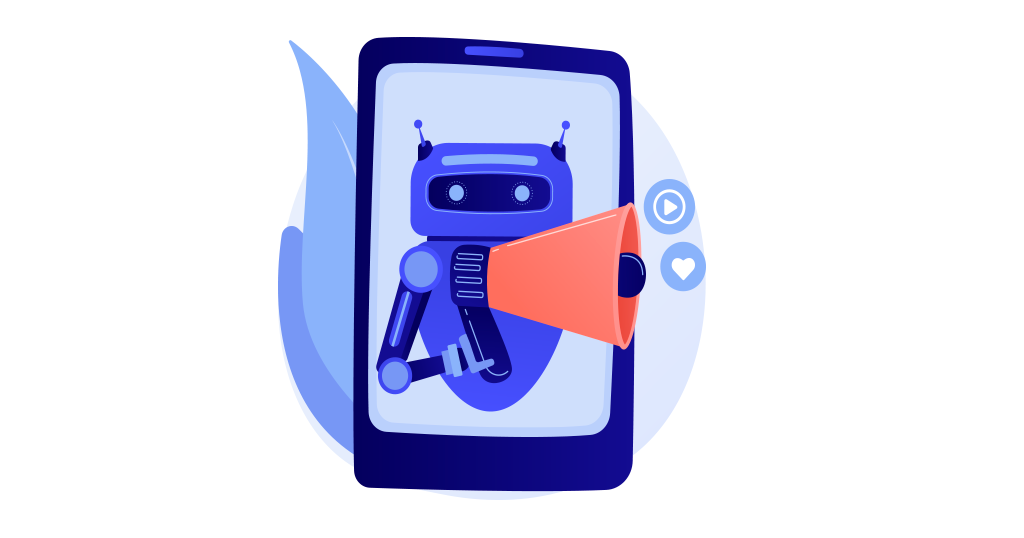We’ve all heard about the mysterious Spotify algorithm—the formula that recommends new music to listeners and is the main ingredient behind your Daily Mixes and Discover Weekly. As an artist, the Spotify algorithm is also something you can use to your advantage (if you know how to make it work for you).
In this article, we will explain what the recommendation algorithm is, and how you can make sure it recommends your music to ideal listeners.
What is the Spotify algorithm?
The Spotify recommendation algorithm is a formula Spotify uses to determine which songs to recommend to its listeners. It works by analyzing each user’s behavior on Spotify (such as which songs and playlists they listen to) and major trends across the platform.

Here’s a breakdown of the factors it takes account of:
1. User behavior
The algorithm analyzes each user’s preferences, including which artists they like and follow, how much time they listen to songs from different genres, and what combinations they like. For example, if a listener repeatedly listened to Ed Sheeran last week, Spotify would recommend his new song to them next week. If they suddenly follow an EDM playlist because they plan to attend an upcoming festival, the algorithm will recognize that they are interested in this genre as well, and recommend more of it.
2. Music analysis
When the algorithm analyzes the music a listener streams, it takes a broad range of factors into account. Not only does it register the genre, mood, and danceability of the track, but it also analyzes song lyrics and meaning. Naturally, when a user listens to music in a particular genre, mood, or theme, the algorithm will offer them similar music.
3. Trends
When a specific song, artist, or genre starts trending on Spotify, it’s a recipe for continued growth via the algorithm. For example, successful new releases (e.g. songs that get lots of streams in their first 24 hours) will signal to the algorithm that it should continue recommending it to more listeners. This means if a song becomes popular among Spotify listeners, the recommendation algorithm brings it to more people and accelerates its listening rate.
Spotify’s algorithm produces recommendations in several routes. The two most obvious are Discovery Weekly and Release Radar. There are also Daily Mixes, which combine a listener’s favorite music with new, similar songs, and Spotify Radio, which begins on command or when a user finishes listening to a song that they searched for.
The Spotify algorithm can help you get discovered

Release Radar, the playlist of new songs that is updated every Friday, and Discover Weekly, which is purely “recommended music you’ve never heard” are both algorithm-curated.
This means the algorithm picks songs that are most likely to match the listener’s musical taste and puts them into these playlists. When your music meets the right guidelines and is matched with similar music, it gets a higher chance of getting onto someone’s algorithmic playlist, without you needing to do anything.
Spotify’s personalized playlists, and these two in particular, are the most popular and followed playlists on the platform. So, if your music gets on them, there is a particularly high chance that the listener will hear it.
Beyond just growing your name and brand (and that’s the goal, isn’t it?), building your online presence, and maintaining a robust artist profile, what actions can have the most impact on the algorithm? What should you, the artist, do to use the Spotify algorithm to your advantage?
Independent playlists are eye-catchers for the Spotify algorithm

The algorithm is all-seeing. It collects more data than what listeners like and the artists they follow, or the songs they play on repeat. It gauges how well your music already resonates with listeners, and creates associations between you and other artists.
For example, if your song appears on the same playlist as Adele, the Spotify algorithm will make this connection and be more likely to recommend your music to Adele’s followers.
In general, the more playlists you get your music on, the more streams and likes you’ll get. And the more people you reach, the more information the algorithm collects, increasing your chances to be recommended to fresh listeners.
Of course, it is critical to get your music on the right playlists that match it, so people won’t skip it—this signals to the algorithm to avoid recommending your track, as we will explain in the next section.
The 30-second rule and smart playlisting
The 30-second rule is another factor that helps the algorithm understand listeners’ tastes and preferences. This time is a threshold that tells the algorithm if a listener likes the song, and it is very simple: If you skip the song in under 30 seconds, the algorithm assumes you didn’t like it, and you will get fewer recommendations of similar songs. If you keep listening beyond 30 seconds, the algorithm assumes you like it, and you will hear more songs like this one.
That’s why, as we said above, you would not want your music everywhere. It needs to be on the right playlists with the right people to create a positive effect. That brings us to playlisting, and the knowledge and actions required to place your music on relevant playlists to grow your exposure and get you more fans.
How to do playlisting strategically and easily

With PlaylistMap, you can search from more than 20,000 legit playlists to identify a robust list of highly relevant ones for your music. Use different search filters to see only the playlists that match your music, and unlock the curators’ contact info so you can message them directly.
You can craft your own pitch message or use our professionally written email templates to make the process fast and easy. This saves you a huge amount of time pitching your music to the right curators so you can get back to doing what you do best: making music.
By adopting the right marketing and submitting methods, you can reach relevant playlists and gain greater exposure. These, in turn, will result in fresh listeners, new places where your music plays, and more fans that will follow you and your journey from now on.


